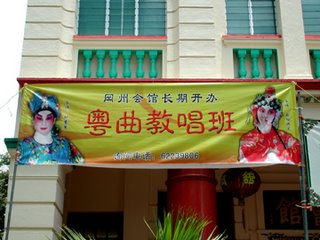
Blooms in a Glimpse: Story of Kreta Ayer
“昙花镜影——牛车水的故事”
Book Launch: Saturday, 10 June 2006, 4.30 p.m.
Singapore Art Museum
With childhood memory drawn from Chinatown, coupled with images created by two Cultural Medallion recipients Yip Cheong Fun and Chua Ek Kay. Chong’s book reconstructs a memory landscape with an urgency to share with us the root-and-branch of a place that has shaped our past and define our presence.
以童年的记忆为经, 以见证南洋风雨的牛车水为纬,资深报人莊永康借童稚的灵犀之眼, 邀约叶畅芬的影像, 与蔡逸溪的水墨, 让似昙花, 像镜影的纯真岁月,忆往, 重构了生命的最初与有情的天地的款款唱和。
Guest of Honour:
Assoc Prof Kwok Kian Woon
National Heritage Board and Singapore Art Museum Board Member, Vice Dean, School of Humanities and Social Sciences, Nanyang Technological University
Speakers:
Mr Chong Wing Hong, Journalist, Lianhe Zaobao
Mr Andrew Yip, Author of Chinatown - different exposures and Singapore Chinatown in pictures
Cultural Programme:
Cantonese Nanyin Performance
Nanyin (Namyum) is a strain of ballad sung in Kreta Ayer over the decades. It is very much a heritage shared by the Cantonese people in Singapore, Hong Kong and along the Pearl River in China. The song of Nan Shaoyi, Burning of Joss Paper, depicts a slice of life more than a hundred years ago, yet with traces of it still cherished by many Chinese of today. It is an integration of musical elements from the Tang and Yuan dynasties, Geyang accent and Minnan folk music.
南音是牛车水的一 缕乡音,散发着新加坡、香 港、珠江沿岸的广东人的共同情感。« 男烧衣»这支南音来自 清朝未年,里头描绘的生活习惯和人情世故到今天还是依稀可辨。它荟集了盛唐以来中原雅乐之精华,后来又吸引了元曲、戈阳腔的特长, 并与闽南的民间音乐融汇一体.
Witness the launching of this new and important publication!
Hosted by Singapore Art Museum
[Ack: Singapore Art Museum]





